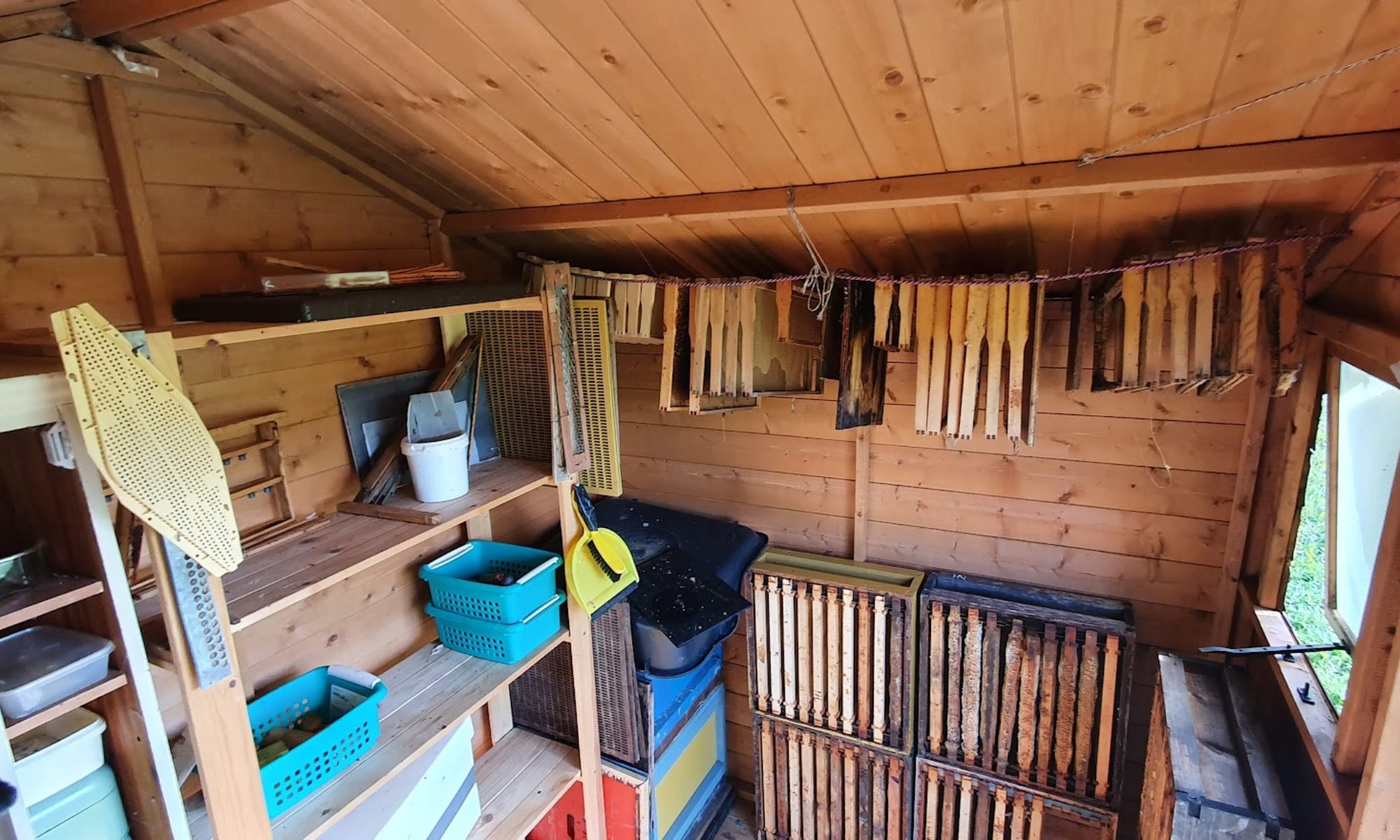For a few years now I’ve wanted to have bees on our allotment plot. Couple of difficulties with the public fear of bees meant that I was blocked from having bees there – long story that I have told far too many times. Either way pending a (so far) 6 week council review period I am hoping to have bees on my plot.
 Keeping bees on an allotment plot would generally be advised to be in an enclosure, to prevent bees interrupting gardening activities; driving the bees up above head height to prevent bee-line collisions on their way to forage. I had planned one before and got as far as put posts up in preparation for a netting enclosure. This then became a rose garden and an asparagus bed (which didn’t work out), which then became overgrown.
Keeping bees on an allotment plot would generally be advised to be in an enclosure, to prevent bees interrupting gardening activities; driving the bees up above head height to prevent bee-line collisions on their way to forage. I had planned one before and got as far as put posts up in preparation for a netting enclosure. This then became a rose garden and an asparagus bed (which didn’t work out), which then became overgrown.
I decided to have a clear up preparing for the bees. Fortunately on most of the area I had put down weed blanket; less fortunately I had put down wood chip which seemed to have a habit of turning to soil covered in weeds. Luckily I had used decent weed blanket which has survived underneath and was up to some sustained trauma while I pulled and scraped weeds off the top.
 After a fair few hours of work the area now looks a lot better, cleaned of weeds, a nice spot for a hive, with wood chippings on the floor. One post had rotted had to be replaced. Along the top of the posts I put a wire in place to hang the mesh from for the bees to fly over. Also in the area there is a water butt fed by the shed roof; I plan to float something on the water surface, as otherwise bees make a habit of drowning. Having a water source so close by should be good for the bees also, with shorter flights; also it should be good for other allotment holders as bees visiting water sources can be a cause for conflict.
After a fair few hours of work the area now looks a lot better, cleaned of weeds, a nice spot for a hive, with wood chippings on the floor. One post had rotted had to be replaced. Along the top of the posts I put a wire in place to hang the mesh from for the bees to fly over. Also in the area there is a water butt fed by the shed roof; I plan to float something on the water surface, as otherwise bees make a habit of drowning. Having a water source so close by should be good for the bees also, with shorter flights; also it should be good for other allotment holders as bees visiting water sources can be a cause for conflict.
So, cross fingers that I can start using the space for its intended purpose soon.



